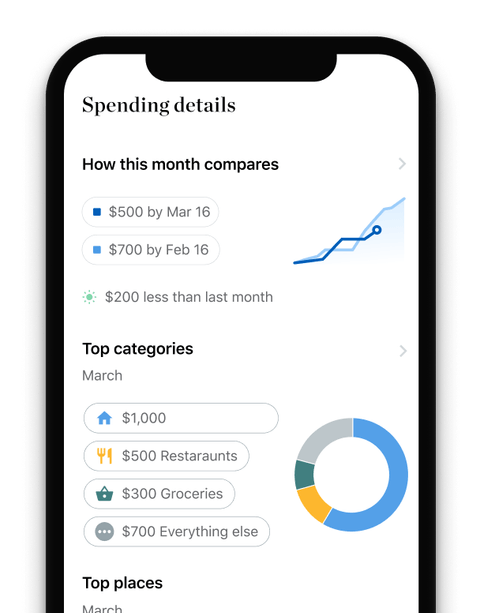What Are FFELP Student Loans?

Many, or all, of the products featured on this page are from our advertising partners who compensate us when you take certain actions on our website or click to take an action on their website. However, this does not influence our evaluations. Our opinions are our own. Here is a list of our partners and here's how we make money.
Find the latest
SAVE lawsuits: What borrowers need to know
On-ramp ends Sept. 30, 2024: Make a plan to pay ASAP
Get your loans out of default: Sign up for the Fresh Start program
Student loan scams rising: How to protect yourself
Key takeaways
FFELP student loans are federally backed loans that were originally funded by private companies.
The FFEL Program ended with the 2009-2010 academic year to make way for Direct Loans, and some were purchased by the federal government.
There are two types of FFELP loans: commercially owned and federally owned.
Borrowers with FFELP loans may want to consolidate to take advantage of more student loan benefits including Saving on a Valuable Education income-driven repayment and Public Service Loan Forgiveness.
The education department is offering a one-time waiver of payment rules that will speed many FFELP borrowers toward forgiveness. It includes those with commercially held loans if they consolidate into a Direct Loan by April 30, 2024.

What was the FFEL Program?
The Federal Family Education Loan Program, or FFELP, provided student loans to borrowers until June 30, 2010. FFELP loans were issued by private and state lenders but guaranteed by the federal government. That means if a borrower defaulted, the government would pay private companies an interest subsidy to make up for the loss.
The federal government purchased some lenders' FFELP portfolios during the Great Recession. FFELP borrowers did not have a choice as to whether or not their loans were included in the purchases. Now some of this debt is owned by the government.
Although the federal government ended the FFEL Program more than a decade ago, there are still about 8.26 million borrowers with outstanding FFELP loans totaling $185.4 billion, as of Dec. 31, 2023, according to the Education Department.
All new federal student loans are now from the Direct Loan Program.
How do I know if I have FFELP loans?
If you have federal student loans from 2010 or earlier, they are likely FFELP loans. Some outstanding FFELP loans are held by the federal government (called ED-held FFELP loans), but most are still privately owned by companies, like the student loan servicer Navient.
Check studentaid.gov to find out what kind of student loan you have and whether it is owned by the federal government or a private company.

What are my repayment options with FFELP debt?
Unconsolidated FFELP loans are generally eligible for:
Income-based repayment and forgiveness.
Student loan deferment and forbearance.
The end of pandemic-era relief for FFELP borrowers
In March 2021, the Department of Education extended interest and collections relief to commercially held FFELP borrowers whose loans are in default. The relief measure was retroactive to March 13, 2020. Most of the benefits expired when federal student loan payments resumed in fall 2023:
Borrowers who made voluntary payments on these loans could request a refund of those amounts.
Guaranty agencies, which hold defaulted FFELP loans, were instructed to implement a 0% interest rate for borrowers.
Any loans that went into default during the pandemic were returned to good standing.
The department requested that credit bureaus remove the default from credit histories.
The relief did not apply to commercially held FFELP loans that were not in default.
Defaulted FFELP Loans and the Fresh Start Program
A one-time temporary program called Fresh Start halts collections and wage garnishment for individuals with defaulted federal student loans through Sept. 30, 2024. Tax refunds and Social Security payments will also not be withheld.
FFELP loans that were in default before the March 2020 are eligible to get their loans back in good standing through the the Fresh Start program. Borrowers must actively enroll in the program to lock-in these benefits. Collections will likely not restart on these loans until September 2024.
Are FFELP loans eligible for PSLF?
FFELP loans aren't eligible for:
Public Service Loan Forgiveness, or PSLF.
To access these programs, you’ll have to consolidate FFELP loans into a federal Direct Loan.
In October 2022 the department announced a one-time IDR waiver. You’ll need to consolidate your commercially held FFEL loans into a federal direct loan by April 30, 2024 to take advantage of the waiver. The Department expects to complete the adjustment by July 1, 2024.
Can (or should) I consolidate my FFELP loan?
You can consolidate a FFELP loan in many cases. You cannot consolidate into a direct loan if you already did a spousal consolidation — you can split your spousal consolidation loan up again if need be — or if you have active litigation or a legal judgment against you.
If you are eligible to consolidate, there are generally still some trade-offs. Consolidating FFELP loans into a direct loan will cause any unpaid interest to capitalize and increase your principal loan balance. Consolidation may also wipe out any progress you’ve made toward income-driven payment forgiveness.
But borrowers can avoid these consolidation downsides if they consolidate by April 30, 2024. Borrowers will need to do this to take advantage of the one-time IDR waiver that allows time in forbearance and some deferments to count toward income-driven loan forgiveness. This consolidation requirement applies only to commercially held FFELP loans; the account adjustment will be automatic for those with federal FFELP loans.
Navient aims to transfer FFELP loans to MOHELA
Navient, one of the servicers that manages commercially held FFELP loans, announced on Jan. 30, 2024 that it plans to offload its private and FFELP student loan portfolio to the servicer MOHELA.
The transfer is slated for the second half of 2024. Navient will retain ownership of the $38 billion FFELP portfolio, but MOHELA will manage operations and interact with borrowers.
Impacted borrowers can expect communications from Navient in the coming months about the planned servicer transfer. Borrowers will be able to use the same phone number and mailing address — and their loan terms, interest rate, account number and repayment plan will stay the same after the transfer, a Navient representative said.





